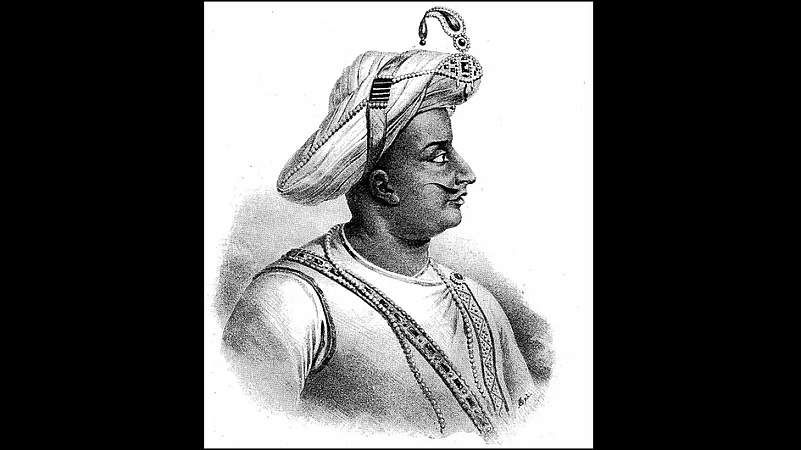In the wake of this year’s Karnataka elections, the political landscape of the state underwent significant transformations. The Janata Dal-Secular (JD-S) led by former Chief Minister HD Kumaraswamy found itself at a pivotal juncture, navigating the complex terrain of political alliances and ideological realignments.?
Tipu Sultan, Ram Mandir And Political Alliances: Navigating Historical Narratives in Karnataka’s BJP-JD (S) Alliance
This decision of the Janata Dal-Secular (JD-S) to align with the Bharatiya Janata Party (BJP) underscored the pragmatic nature of political manoeuvring. The JD (S) demonstrated a willingness to set aside historical narratives in favour of forging alliances that would serve its political interests.

Delving into the intriguing dynamics surrounding the JD (S)’s decision to align with the Bharatiya Janata Party (BJP)-led National Democratic Alliance (NDA) sheds light on the intricate interplay between historical narratives, ideological shifts, and political accommodations. The narrative revolved around two pivotal historical figures: 18th-century Mysore ruler Tipu Sultan and the Ram Temple in Ayodhya. These seemingly contrasting elements became central to the political discourse, reflecting the malleability of party ideologies in the pursuit of political gains.
During the electoral campaign, Union Home Minister Amit Shah strategically utilised these historical figures to draw ideological distinctions between parties. Shah’s assertion was clear that the JD(S) held allegiance to the legacy of Tipu Sultan, while the BJP drew inspiration from the 16th-century Tuluva queen of Ullal Rani Abbakka Chowta. This episode marked a pivotal moment in the political narrative, emphasising the significance of historical narratives in shaping contemporary perspectives.
However, as the elections concluded, the JD (S) took a surprising turn by aligning itself with the BJP-led NDA. This decision, though initially confounding given the party’s purported allegiance to Tipu Sultan, underscored the pragmatic nature of political manoeuvring. The JD (S) demonstrated a willingness to set aside historical narratives in favour of forging alliances that would serve its political interests.
One of the most divisive elements of the Karnataka campaign centred around the BJP’s proposal for a cinematic venture. This endeavour aimed to probe into the alleged figures behind the demise of Tipu Sultan, specifically the Vokkaliga leaders Uri and Nanje Gowda. The narrative presented in this initiative clashed with established historical accounts, potentially stoking discord among the diverse communities of Karnataka. This incident underscored the significant sway that political interpretations of the past can hold over societal harmony.
HD Kumaraswamy, the leader of the JD (S), launched a blistering critique against the BJP, accusing them of harbouring a hidden agenda to mislead the Vokkaliga community. He vigorously asserted that the BJP’s tactics involved fabricating fictional Vokkaliga personalities and falsely attributing Tipu Sultan’s demise to them, all with the aim of tarnishing the Vokkaliga community. Against the backdrop of the BJP’s endeavours to fortify its presence in the Old Mysore region, where the JD (S) heavily relies on Vokkaliga support, Kumaraswamy emphasised the community’s existing grievances. He spotlighted the installation of a memorial arch for Uri Gowda-Nanje Gowda, viewed as an effort to overshadow the legacy of the esteemed pontiff Balagangadharananatha Swami. In addition to Kumaraswamy’s apprehensions, he feared that a planned film would inflict further damage upon the Vokkaligas, solidifying them as perennial adversaries in the chronicles of history.
In a counter-accusation, Kumaraswamy criticised the BJP for allegedly misleading the youth in the name of Hindutva and Hindu Rashtra. He contended that the BJP’s primary focus was on the establishment of a Hindu Rashtra, diverting attention from pressing issues like employment and economic stability, which were crucial for supporting families and dependents. This manipulation of the nation’s youth, he believed, was detrimental to addressing the real challenges facing society.
On a political note, this incident marked a recurring instance where the former chief minister sharply criticised the saffron party. Previously, he asserted that the Rashtriya Swayamsevak Sangh (RSS) and its associated groups, fervently mobilising funds for the construction of the proposed Ram Temple in Ayodhya, were conspicuously identifying households that had not contributed. Kumaraswamy employed a provocative comparison, invoking similarities with the methodologies employed by the Nazis in Germany during Hitler’s rule. Through this statement, he articulated his apprehensions regarding the potential consequences of such actions, underscoring a historically sensitive backdrop.
This scathing statement by Kumaraswamy came just a week after his party joined forces with the BJP to elect Basavaraj Horatti, a veteran JD (S) councillor, as the chairman of the Legislative Council. The Council’s first significant decision under Horatti’s leadership was to pass the Karnataka Prevention of Slaughter and Preservation of Cattle Ordinance, 2021, by a voice vote. This move signified a shift in the state’s approach to cattle preservation and slaughter, reflecting the new political dynamics.
As the elections concluded, the RSS in response to Kumaraswamy’s allegations, provided a dismissive rejoinder. This response further exemplified the polarisation and division characterising the political discourse. A lack of engagement with these concerns hindered the potential for constructive dialogue and resolution.
Now, Karnataka stands at a critical crossroads, navigating a newly formed political landscape. The choices made during these elections and the subsequent political alignments set the state on a trajectory that would undoubtedly shape its future. It was incumbent upon the citizens to rise above divisive rhetoric and controversial interpretations of the past. Rather than getting caught up in historical narratives, the focus should shift towards policies and solutions that address the pressing needs of the state and its diverse populace.
In conclusion, the Karnataka elections and the subsequent political developments underscored the intricate interplay between history, ideology, and contemporary politics. The choices made during this period were poised to resonate for years to come, emphasising the importance of an engaged and vigilant electorate in the democratic process. The JD (S)’s decision to align with the BJP-led NDA served as a striking example of the malleability of party ideologies in the pursuit of political accommodations. This episode serves as a poignant reminder of the complex and ever-evolving nature of political dynamics in India’s diverse and historically rich landscape.
(Views expressed are personal)



















